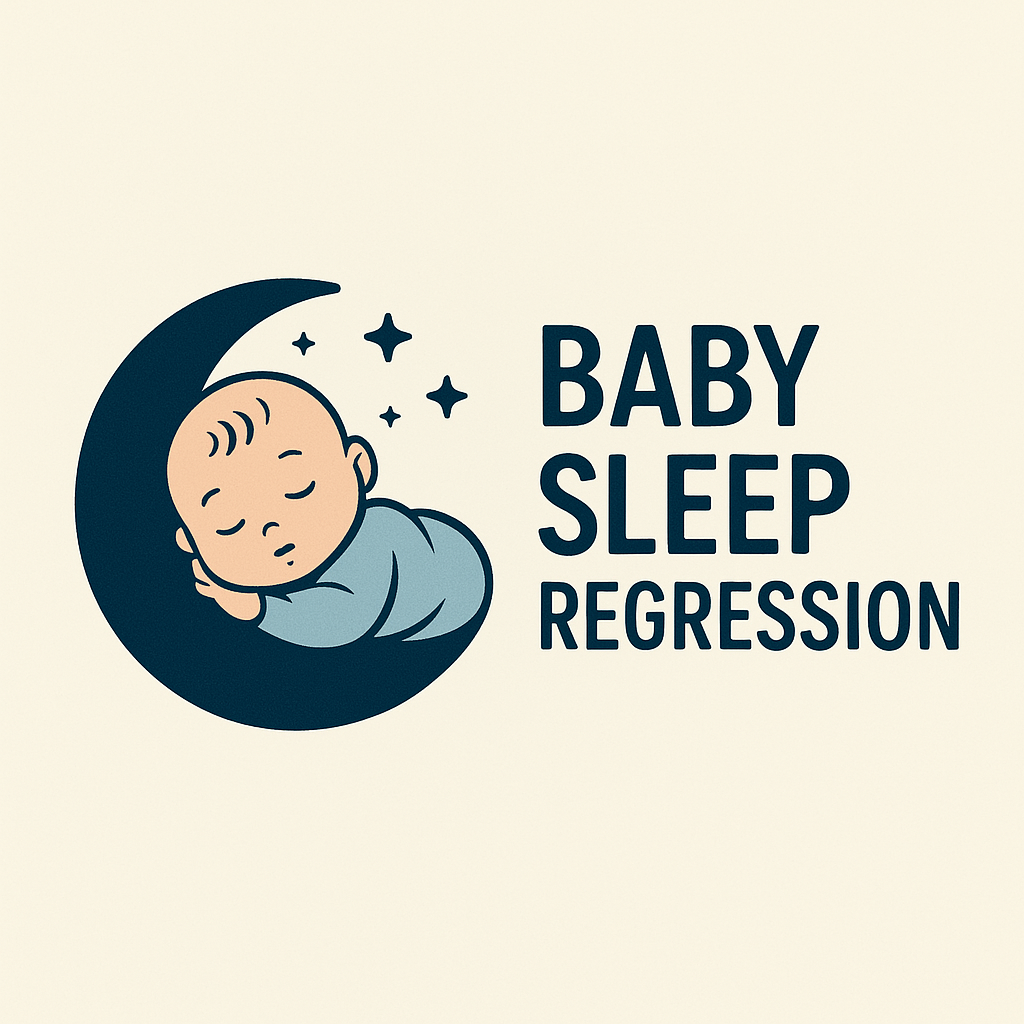How to Handle the 14 Month Sleep Regression with Ease

The 14-month sleep regression can be challenging, but it’s a completely normal part of your toddler’s development. This phase occurs because your little one is growing and learning at a rapid pace. Their new motor, cognitive, and emotional skills can disrupt their sleep patterns, leading to frequent wake-ups or difficulty falling asleep.
It’s natural to feel frustrated, but remember that the 14-month sleep regression is temporary. Maintaining a consistent routine can help make this period more manageable. Stay patient as your child adjusts to these changes. With the right approach, you can support them in improving their sleep and navigating this stage successfully.
Key Takeaways
The 14-month sleep regression is a normal stage for toddlers. It usually lasts 2 to 6 weeks.
Keeping a regular bedtime routine helps toddlers feel safe and sleep better.
Look for signs like waking up more or trouble falling asleep. Change routines if needed.
Help your toddler learn to calm themselves by letting them fall asleep alone. This builds their confidence and sleep skills.
Change nap times and awake times to fit your toddler's new sleep needs. This helps avoid them getting too tired.
Make the room good for sleep by keeping it dark, quiet, and cool.
Stay calm and patient during this time. Don’t start new habits that might cause problems later.
If sleep issues last over six weeks or harm your child’s health, talk to a pediatrician for help.
What Is the 14-Month Sleep Regression?
The 14-month sleep regression is a short phase when your toddler's sleep changes. During this time, big developmental shifts can make it tough for them to relax and sleep. Knowing why this happens can help you handle it better.
Why It Happens
Developmental Milestones
At 14 months, toddlers hit exciting milestones. Many start walking and trying new movements. These skills can make them restless as they practice and gain independence. Also, their language skills grow quickly. Saying new words can keep their brain active, making bedtime harder.
Changes in Sleep Needs
As toddlers grow, their sleep needs change. They might need less daytime sleep, which affects their schedule. Long or late naps can make falling asleep at night tricky. Watching their sleep habits and adjusting naps can help balance their routine.
Emotional and Cognitive Growth
Your toddler's emotions and thinking skills also affect their sleep. Around this age, separation anxiety peaks. They notice more around them and may want extra comfort from you. This awareness can cause more night waking or trouble settling down. As they explore independence, they might test limits, which can also disturb sleep.
Tip: Stay calm and stick to routines during this stage. Your toddler's brain is busy learning new things, which can temporarily affect their sleep.
Recognizing the Signs of the 14-Month Sleep Regression

Knowing the signs of the 14-month sleep regression helps you handle it better. During this time, your toddler might have trouble sleeping, act differently, or resist naps. Spotting these signs early lets you change routines and give needed support.
Sleep Disruptions
Waking Up More at Night
Your toddler might wake up more often at night, even if they used to sleep well. This is very common during this phase. Studies say 96.8% of toddlers wake up more during sleep regressions. Growth milestones or teething can cause this. If they wake up crying or seem upset, they may need extra comfort.
Tip: Keep nighttime care short and calm. This helps them fall back asleep on their own.
Trouble Falling Asleep
Bedtime might get harder. Your toddler could fight sleep or take over 20 minutes to settle. Their busy brain or changing sleep needs might be the reason. For example, they might cry during the bedtime routine or scream when laid down. These are signs their sleep is temporarily off.
Behavioral Changes
Clinginess or Fear of Separation
Your toddler might stick close to you, especially at bedtime. This clinginess often comes from separation anxiety, which peaks around 14 months. It’s normal as they become more aware of their surroundings and their bond with you.
Note: Stay calm and comfort them, but avoid creating new sleep habits.
More Fussiness or Tantrums
Your toddler might seem crankier or have more tantrums. Emotional growth and frustration with new skills can cause this. These mood swings often come with sleep troubles, making it harder for them to relax.
Nap Challenges
Refusing to Nap
Nap time might turn into a struggle. Your toddler could cry or refuse to nap. This often happens as they adjust to needing less daytime sleep. For example, a 15-month-old might skip naps even when they still need rest.
Shorter Naps or Skipped Naps
You might notice shorter naps or days without naps. This can make them overtired, which worsens nighttime sleep problems. If naps seem “off,” it’s a sign their sleep is changing.
Tip: Watch their nap schedule and adjust it to ensure enough daytime rest.
Common Causes of the 14-Month Sleep Regression
Understanding why the 14-month sleep regression happens can make it easier to manage. This phase is often caused by big milestones, discomfort, and emotional changes.
Developmental Milestones
Walking and Motor Skill Development
At this age, your toddler is learning to walk and move more. These new skills are exciting but can mess with their sleep. They might even practice movements at bedtime, making it hard to relax.
Around 12 months, toddlers start reaching big milestones like walking.
These changes can affect sleep as they focus on new skills.
Sleep cycles shift to adult-like patterns, causing trouble falling asleep.
Separation anxiety adds stress, making sleep routines harder to follow.
Tip: Let your toddler play and move a lot during the day. This helps them use up energy and sleep better at night.
Language Acquisition
Learning to talk can also disrupt sleep. At 14 months, toddlers begin saying words and growing their vocabulary. This brain activity can keep them awake when they should be resting. Studies show that regular sleep helps toddlers develop motor and language skills faster.
Note: A calm bedtime routine, like reading or singing, can help your toddler relax and get ready for sleep.
Teething and Physical Discomfort
Teething is another reason for sleep troubles. Swollen gums, drooling, and biting urges can make it hard for toddlers to settle. Research shows how common teething symptoms are:
Symptom | Percentage (%) |
|---|---|
Fever | 84.1 |
Sleep disturbance | 60.2 |
Gum irritation | 54.2 |
Desire to bite | 66.5 |
Increased salivation/drooling | 60.2 |
Poor feeding | 65.3 |
Gum swelling | 42.6 |
Tip: Give your toddler a teething toy or a cold washcloth. These can ease gum pain and help them sleep better.
Separation Anxiety
Separation anxiety peaks at 14 months, making bedtime tough. Your toddler might cry when you leave or wake up often for comfort. This shows their growing bond with you but can disturb sleep.
To help with separation anxiety:
Stick to the same bedtime routine every night.
Use a comfort item, like a blanket or stuffed toy, to help them feel safe.
Reminder: Don’t start new habits like rocking them to sleep. This can make it harder for them to fall asleep on their own later.
Changes in Routine or Environment
Changes in your toddler's routine or surroundings can affect their sleep. At 14 months, kids like things to stay the same. Any change in their day or space can make it harder for them to relax and sleep.
Adjustments in Daily Routine
Even small changes in daily activities can mess up sleep. Skipping a nap or having a busy day can make them overtired. Being overtired often makes it harder to fall or stay asleep. A late nap can also delay bedtime, confusing their body clock.
To help, keep their schedule steady. Have meals, playtime, and naps at the same times daily. If you know a change is coming, like a trip or appointment, plan ahead. Slowly adjust their routine to reduce its effect on sleep.
Tip: Use simple signals, like dimming lights, to show bedtime is near.
Environmental Changes
A new place can also disturb your toddler's sleep. Moving, traveling, or changing their room setup can make them uneasy. Toddlers feel safe in familiar spaces, especially at bedtime.
If you're traveling, pack comfort items like their favorite stuffed toy or blanket. These can help them feel secure in a new place. At home, keep their sleep area the same. A quiet, dark, and cool room with few distractions is best for good sleep.
Seasonal or Temporary Changes
Seasonal shifts, like daylight saving time, can confuse their sleep schedule. Longer daylight hours might make it harder for them to settle at night. Temporary issues, like noisy visitors or loud neighbors, can also disturb their sleep.
To handle this, use blackout curtains to block light and a white noise machine to cover sounds. These can create a peaceful space, even during disruptions.
Reminder: Be patient as they adjust to changes. It might take a few days for their sleep to improve.
By keeping things consistent and preparing for changes, you can help your toddler handle disruptions without much trouble.
How Long Does the 14-Month Sleep Regression Last?
The 14-month sleep regression may seem endless, but it’s temporary. Knowing how long it usually lasts and what can make it longer helps you prepare.
Typical Duration
Most toddlers go through this phase for 2 to 6 weeks. During this time, their sleep might change a lot. They could wake up more at night, take shorter naps, or fight bedtime. These changes happen as they grow and their sleep needs shift.
While 2 to 6 weeks is common, every child is unique. Some toddlers adjust quickly, while others take more time. Keeping routines steady and offering comfort can help them get back to normal sleep faster.
Tip: Write down your toddler’s sleep habits. A sleep diary can show patterns and help you adjust their schedule if needed.
Factors That May Prolong It
Some things can make the 14-month sleep regression last longer. Fixing these early can stop it from dragging on.
Inconsistent Routines
Toddlers need routines to feel secure. If their schedule changes often, it can confuse them. For example, irregular nap or bedtime hours can mess up their sleep.
To help, keep a steady routine. Have meals, naps, and bedtime at the same times daily. A predictable schedule tells their body when it’s time to rest.
Reminder: Even on busy days, try to stick to their routine. Small changes can make a big difference.
Underlying Health Issues
Health problems can also cause longer sleep troubles. Things like ear infections, allergies, or teething pain can make it hard for toddlers to sleep. If your child seems very fussy or uncomfortable, talk to a doctor.
Sometimes, sleep disorders might be the issue, though they’re rare. If the regression lasts over 6 weeks or affects your child’s health, ask a pediatrician for advice.
Note: Trust your instincts. If something feels wrong, don’t wait to get help.
By knowing how long this phase lasts and fixing problems early, you can help your toddler through it. Stay patient and keep routines steady—it will pass!
Practical Strategies to Manage the 14-Month Sleep Regression

Handling the 14-month sleep regression can be tough, but simple steps help. Focus on keeping routines steady, changing schedules, and teaching self-soothing. These actions make this stage easier for you and your toddler.
Stick to a Regular Bedtime Routine
A regular bedtime routine helps toddlers sleep better during regressions. Studies show toddlers with routines at 12 months have fewer issues at 15 months. Routines also improve emotions and social skills.
Calm Bedtime Activities
Relaxing bedtime activities show your toddler it’s time to sleep. Reading, singing, or a warm bath can calm them down. These habits prepare their body and mind for rest.
Tip: Keep bedtime activities simple and calming. Skip screens or rough play before bed.
Daily Schedules That Stay the Same
Toddlers do well with predictable schedules. Set times for meals, naps, and bedtime help their body clock stay steady. This makes falling asleep easier.
Reminder: Stick to their usual schedule, even on busy days. Small changes can confuse their sleep routine.
Change Sleep Schedules
As toddlers grow, their sleep needs shift. Adjusting their schedule can stop overtiredness and improve sleep.
Watch Awake Times
Awake times between naps are important for good sleep. At 14 months, toddlers can stay awake for 3 to 4 hours. If falling asleep is hard, extend awake time by 10-15 minutes. This helps them feel ready for sleep.
Active play during awake times burns energy and helps nighttime sleep.
Look for tired signs like yawning or rubbing eyes to find the best awake time.
Tweak Nap Times
Your toddler’s naps might need changes during this phase. If they skip naps or wake early, move nap times earlier or later. Shorter naps can also help bedtime go smoother.
Note: Avoid naps too close to bedtime. This can make falling asleep harder.
Teach Self-Soothing
Helping your toddler self-soothe builds independent sleep skills. Research shows self-soothing reduces night waking and improves sleep.
Let Them Fall Asleep Alone
Put your toddler in their crib when they’re sleepy but awake. This teaches them to relax and sleep without help.
Technique | What It Does |
|---|---|
Helps toddlers connect their crib with sleep, building self-soothing skills. | |
Gradual Withdrawal Method | Slowly reduces your presence, helping your child learn to sleep alone. |
Keep Nighttime Care Short
When your toddler wakes at night, respond calmly and briefly. Pause before helping to give them a chance to settle alone. This builds their ability to self-soothe over time.
Reminder: Don’t start habits like rocking or feeding to sleep. These can make self-soothing harder later.
By keeping routines steady, adjusting schedules, and teaching self-soothing, you can help your toddler through sleep regression. These tips improve sleep and support their growth.
Address Specific Challenges
Easing Teething Pain
Teething is often blamed for sleep problems, but it’s not always the main reason. Instead, watch your toddler’s behavior and focus on their overall comfort. Not every wake-up is caused by teething.
To help with gum pain, give them a teething toy or a cold washcloth to chew on. These can soothe their gums and help them relax before bed. If they seem very uncomfortable, ask your pediatrician about safe over-the-counter remedies. Combine these steps with a steady bedtime routine to create a calm space for better sleep.
Tip: Use a journal or app to track your toddler’s sleep. This can show patterns and help you adjust their routine.
Managing Separation Anxiety
Separation anxiety peaks at 14 months, making bedtime harder. Your toddler might cry when you leave or wake up often for comfort. A predictable bedtime routine can help them feel safe. Activities like reading a book or singing a lullaby remind them you’re nearby.
Offer a comfort item, like a favorite blanket or stuffed toy, to help them feel secure. Slowly reduce how much you stay in the room at bedtime. For example, sit near their crib at first, then move farther away each night. This helps them learn to sleep on their own.
Reminder: Don’t start habits like rocking or lying down with them. These can make it harder for them to self-soothe later.
Create a Sleep-Friendly Environment
Keep the Room Dark, Quiet, and Cool
A good sleep environment helps your toddler rest better. Use blackout curtains to block light and keep the room quiet. A cool temperature, between 68°F and 72°F, makes the space more comfortable.
If noise is a problem, try a white noise machine to block sounds. This steady background noise can help your toddler stay asleep longer.
Tip: Check the room’s lighting and temperature before bedtime to make sure it’s ready for sleep.
Add White Noise or Comfort Items
White noise machines can play calming sounds like rain or waves, helping your toddler relax. Pair this with a comfort item, like a soft blanket or stuffed toy, to make their sleep space feel safe and cozy.
These tools can ease anxiety and improve sleep, especially during tough phases. Just make sure comfort items are safe and age-appropriate for the crib.
Reminder: Keep the crib free of clutter to avoid distractions or safety issues.
Stay Calm and Patient
Avoid Starting New Sleep Habits
During sleep regressions, it’s tempting to try new ways to calm your toddler. But habits like rocking them to sleep or lying down with them can cause long-term sleep problems.
Stick to your usual bedtime routine and stay calm during nighttime wake-ups. Reassure your toddler briefly without long interactions. This helps them learn to settle on their own.
Tip: If your toddler has trouble falling asleep, wait a few minutes before stepping in. This gives them a chance to self-soothe.
Take Care of Yourself
Sleep regressions can be tiring for parents. Make time for yourself to stay patient and focused. Take short breaks during the day, like having tea or getting fresh air.
Talk to other parents or join support groups to share advice and stories. Remember, this phase won’t last forever, and your efforts will help your toddler in the long run.
Reminder: A rested parent is better able to handle challenges and support their child’s sleep.
When to Seek Professional Help
Sometimes, the 14-month sleep regression might mean a bigger problem. Most sleep troubles improve in weeks, but some signs need attention. Watching for these signs can help you act early.
Signs That May Show a Bigger Problem
Sleep Troubles Lasting Over Six Weeks
If your toddler’s sleep problems go past six weeks, it could mean something more serious. Skipping naps or waking up sometimes is normal. But if routines and schedule changes don’t help, it’s time to look deeper.
Sleep disorders are more common than people think. For example:
1 in 4 people report having a sleep disorder.
30% to 40% of adults face insomnia symptoms each year.
These numbers focus on adults but show how common sleep problems are. Acting early can stop bigger issues for your child.
Worries About Growth or Milestones
Sleep is key for your toddler’s growth and learning. If they’re late in walking or talking and also have sleep issues, get advice. Signs like being cranky, eating poorly, or low energy might mean a deeper issue. Trust your gut. If something feels wrong, talk to a doctor.
Talking to a Pediatrician or Sleep Expert
If sleep problems don’t improve or you’re worried about your child, ask a professional. A pediatrician can check their health and rule out things like allergies or ear infections. They can also give tips that fit your child’s needs.
Sometimes, a sleep expert might be needed. These specialists find and treat sleep problems. They can check for issues like sleep apnea and suggest solutions. Fixing these early helps your child rest and grow well.
Tip: Write down your toddler’s sleep habits before seeing a doctor. Tracking wake-ups, naps, and patterns can help find the cause of the problem.
Knowing when to get help ensures sleep troubles don’t hurt your toddler’s growth or mood. Expert advice can bring back healthy sleep routines.
The 14-month sleep regression may seem tough, but knowing why it happens helps. Notice changes in your toddler’s sleep and actions. Try simple steps like keeping routines steady, teaching self-soothing, and making their room cozy for better sleep. This stage won’t last forever and is part of growing up. Stay calm and work on keeping things peaceful. If sleep problems continue or you’re worried, talk to a doctor for advice. Your care will help your toddler learn good sleep habits.
FAQ
How should I handle nighttime wake-ups during the 14-month sleep regression?
Keep things quiet and calm. Don’t use bright lights or play games. Comfort your toddler with a soft voice or gentle pat. Help them learn to fall back asleep on their own.
Should I stop naps if my toddler refuses to nap?
Not always. Watch how they act and their energy levels. If they seem tired or cranky, they still need naps. Try changing the nap time or making it shorter instead of skipping it.
How can I know if teething is causing sleep problems?
Check for drooling, swollen gums, or chewing on things. If these happen with sleep troubles, teething might be the reason. Give them a teething toy or ask your doctor about safe treatments.
Can I travel during the 14-month sleep regression?
Yes, but plan carefully. Stick to their usual sleep routine as much as you can. Bring familiar items like a favorite blanket or stuffed animal to help them feel safe in new places.
Is it okay to let my toddler cry during this phase?
Some families try controlled crying, but it’s not the only way. Gentler methods, like putting them down sleepy but awake, can also work. Pick what feels best for your family and child.
How do I know if my toddler is too tired?
Signs include crankiness, rubbing their eyes, or being too active before bed. Overtired toddlers may also wake up more at night. Adjust their schedule to make sure they rest enough during the day.
Should I change bedtime during the regression?
You might need to shift bedtime a little. If falling asleep is hard, try moving bedtime earlier or later by 15 minutes. Watch how they respond to find the best time.
When should I worry about my toddler’s sleep regression?
If sleep problems last over six weeks or affect their growth or mood, talk to a doctor. Long-lasting issues might mean there’s a bigger problem.
Tip: Write down sleep patterns in a diary. Share it with your doctor if needed.
See Also
Easily Navigating the 9 Month Sleep Regression Phase
Understanding Causes and Remedies for 14 Month Sleep Regression
Strategies for Managing 3-Year-Old Sleep Regression Challenges

